English Sparkling Wine terms; your quick guide from Balfour
Ever wondered what non-vintage really means? Or phrases like Brut, Blanc de Blancs or even how you can have a red Sparkling Wine?
We’ve pulled together this quick glossary of key terms to help you navigate the incredibly exciting, and slightly confusing, world of English Sparkling Wine. Not all the terms are quite what they seem too.
“Non Vintage (or NV)”
Simply means a wine from more than one ‘vintage’ – or “year”. This allows winemakers to create a consistent style which will taste the same every single release. In order to make these NV wines, they’ll blend different parcels from different years to a set ‘recipe’, taking a pinch of 2015 for its acidity, or 2018 for its fruit etc – so that whether you’re drinking the wine on your wedding day, or your 50th anniversary, it’ll taste the same.
Try : Our Leslie’s Reserve Gold
“Vintage”
Means the wine *has* to come from one particular year. For many producers, they’ll only release a ‘vintage’ Sparkling Wine when the harvest has been exceptional. For Balfour, the wines which go into our Vintage Collection (Balfour Brut Rosé, Blanc de Blancs and Blanc de Noirs) all fall under this category. Generally these wines have longer ageing and development before release too.
Try : our vintage Balfour Brut Rosé
“Brut”
Is the most common term you’ll often see on a wine label, and is there a signifier of sweetness. A ‘Brut’ fizz has 0-12 grams of sugar per litre, alternatively you might see terms like ‘Demi-Sec’, “Sec” or even “Doux” for a sweeter wine, or Brut Nature’ for a drier style
Try : Our Leslie’s Reserve Brut
“Blanc de Blancs”
Speaking of which, Blanc de Blanc(s) literally means ‘white from whites’. So that’s using white grape varieties (largely Chardonnay) to create a Sparkling Wine. You can have vintage or non-vintage styles of these wines. They tend to be slightly richer in style, with a textbook ‘toastiness’. And age beautifully too.
Try : our Balfour Blanc de Blancs
“Blanc de Noirs”
A slightly less well known style, but extremely exciting one to get to grips with. Blanc de Noirs means white from red – so this is a white fizz, made from ‘red’ wine grapes (usually Pinot Noir or Pinot Meunier). A wine’s colour comes from the grape skins, and the quicker you remove those skins in the process – the lighter (in colour) the wine. So in the case of BdN, those skins are whipped away almost straight away, removing the reddish hue you might expect – as well as the bitterness and tannins from the grape. The result is all the soft, summer fruits of Pinot, clean and fresh.
Try : our Balfour Blanc de Noirs
“Traditional (or Champagne) Method”
Is the way nearly all English Sparkling Wine is made, and also how Champagne or Traditional Method international wines are constructed. It’s a more complex process than say Tank Method (which is used for Prosecco), but boils down to undergoing the secondary fermentation of the wine in the bottle it will be served in. This adds more depth, complexity and layers to the wine – as well as leaving behind the ‘lees’ or yeast, which can help develop the wine further. It’s a more gentle method of production, and takes a lot more time and effort. But, we believe, more than worth it.
“Champagne Grapes”
This generally refers to three ‘allowed’ varieties which are the backbone of all Champagne – Chardonnay, Pinot Noir and Pinot Meunier. Although there are some offer ancient, unorthodox and exciting varieties permitted which you will even find at Balfour, including Arbane, Petit Meslier, Pinot Blanc and Pinot Gris. You can still taste these in some of our Winemaker Collection releases.
Try : our Winemaker Series Le Sixes
“Sparkling Rosé”
A style which has become hugely popular over recent years is Sparkling Rosé. These are often a blend of different grapes – but unlike a Blanc de Noirs – the red grapes skins are left in contact with the wine to impart some colour. So even though the wine is often predominantly from white grape varieties, there will still be a salmon-like hue to the finished fizz.
Alternatively, it is also possible to make a ‘saignée’ method (more commonly seen in still rosé). Translated as “bleeding”, the grape-must is allowed to gently sit and permeate through the wine over a number of days – creating a darker, fuller bodied fizz. It’s rare, but not unknown, for this to be used for sparkling production, and even in England there’s been some exciting examples (such as in our Winemaker Series).
Try : our Wine Maker Series Saignee 2018
“Sparkling Red”
Allowing even further colour extraction from the grapes can lead to a (relatively) rare style of wine; Sparkling Reds.
You’ll find Lambrusco in Italy, and Sparkling Shiraz in Australia, as key styles of this wine – often with higher sugar levels to balance any of the bitterness from the additional time the grapeskins are allowed to stay in contact with the wine. In England, the style is reasonably uncommon but not unheard of – with the gentle aromas of Pinot Noir making for a satisfying, fruity fizz when a winemaker chooses to make this style. It’s growing in popularity too, and (due to the slightly fuller bodied than a rosé style) makes for some great food pairings.
Try : our Leslie’s Reserve Red NV
Back to Blog